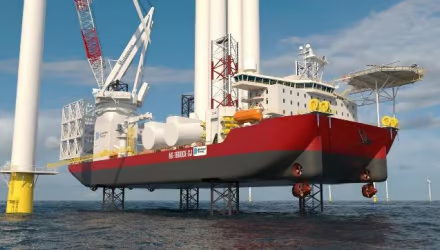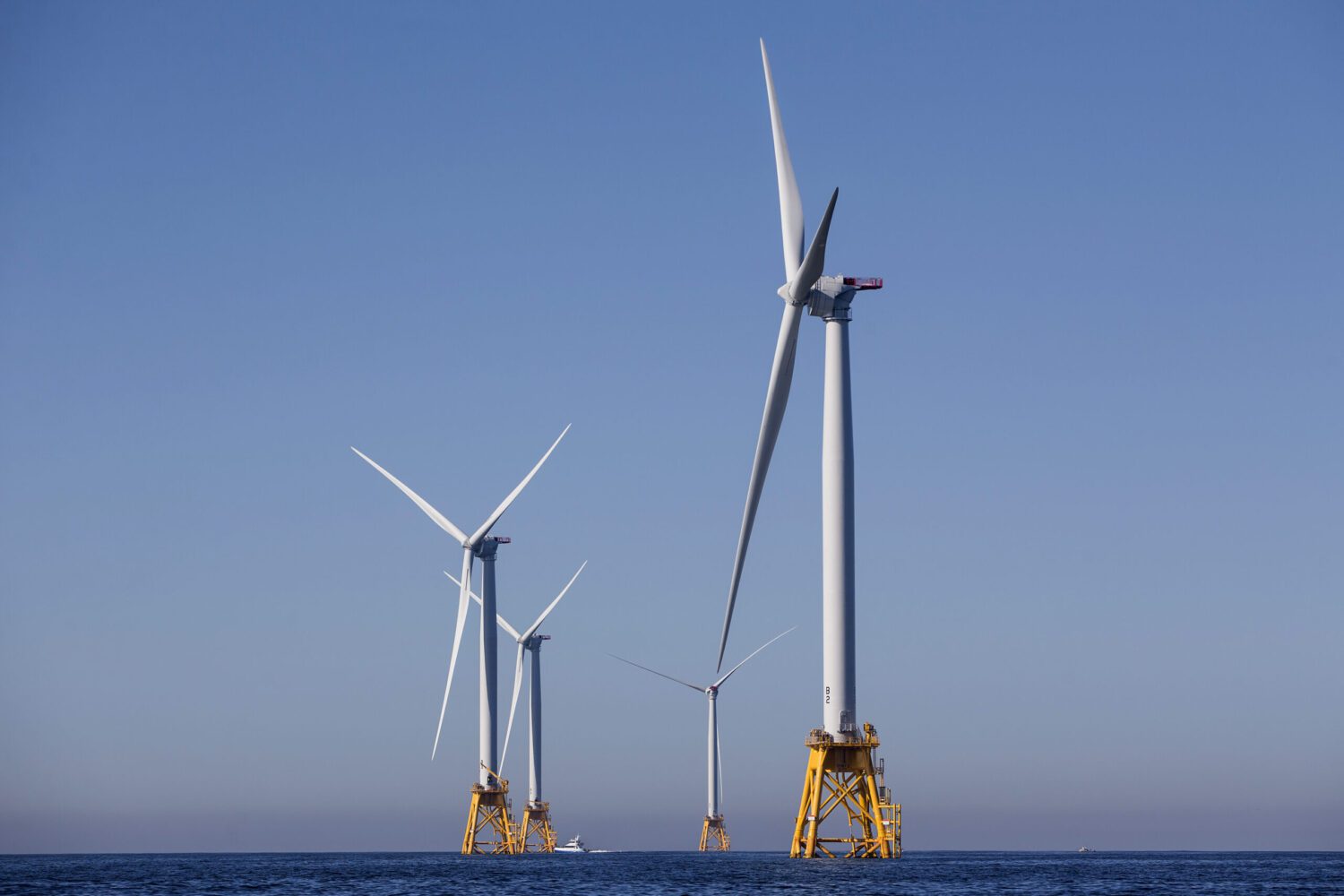It’s official: nearly four years after first announcing plans to pursue a renewable energy hub in Searsport, Gov. Janet Mills announced this week that the state has chosen Sears Island as the preferred site for assembling massive offshore wind turbines.
State officials want to move quickly, in part to give Maine an edge in the emerging floating offshore wind market.
Mills said in a press release this week that she expects the permitting process to take roughly a year. Construction on the port — which will have a footprint larger than Bath Iron Works — could be finished by 2030, if all goes to plan.
The Biden Administration has big plans for offshore wind, with a goal of installing 30 gigawatts by 2030. That will require more than 2,000 turbines, 6,800 miles of cable and dozens of specialized vessels to move the component parts and tow the turbines, some of which are more than 800 feet tall, out to sea.
Let’s talk about those vessels, which, along with an obscure provision of a law passed by Congress in 1920, are complicating the installation of offshore wind turbines in the U.S.
The Merchant Marine Act of 1920, better known as the Jones Act, requires goods shipped between U.S. ports to be transported on vessels that have been built in American shipyards, are registered in the U.S. and are crewed and owned by U.S. citizens.
Customs and Border Protection, which enforces the law, has said it applies to any device installed on the seafloor up to 200 nautical miles offshore. That means an offshore wind turbine counts as a point, and foreign ships cannot bring materials or crew from a U.S. port to a wind turbine installation site.
As you might imagine, putting giant wind turbines together at sea requires a lot of highly specialized equipment, including “wind turbine installation vessels,” or WTIVs, to assemble the turbines and “heavy lift” vessels to install the foundations. (Big points for creativity to whoever came up with those names.)
There are only a handful of such ships worldwide, and none of them meet the Jones Act requirements. Overall, only 99 cargo ships qualify for deliveries between two points in the U.S., according to the Wall Street Journal.
That means developers installing offshore wind projects in U.S. waters have had to get creative to comply with the law — a company that put up test turbines off the coast of Virginia, for instance, had to ferry parts back and forth from Nova Scotia, more than 800 miles away.

That adds cost and time to projects that are already very, very expensive. Ørsted cited vessel delays as part of the reason for scrapping two planned wind farms off the coast of New Jersey that were expected to cost more than $3 billion.
The Department of Energy has estimated that the U.S. will need four to six Jones Act-compliant WTIVs and another four to six heavy lift ships to meet its offshore wind goals.
WTIVs cost hundreds of millions of dollars to build and are highly specialized, with a large crane to hoist the turbine pieces into place and “jack up legs” attached to the hull that can be extended all the way to the seafloor, making the vessel into a stable platform above the waves while construction is underway.
One is being built in Texas (for $625 million) but there don’t appear to be any more in the pipeline. A recent assessment of the industry’s supply chain as it relates to Maine pointed out that it might be possible to repurpose existing ships to handle installation by adding leg extensions and upgrading cranes.
The vessel needs and supply chain for Maine’s offshore wind industry will be different – and likely not as hindered by the Jones Act – because the state plans to focus on floating offshore wind, as opposed to the fixed bottom turbines being installed elsewhere on the east coast. Floating turbines are designed to be assembled dockside and towed out to sea.
Supporters of the Jones Act say the law protects the country’s shipbuilding industry and maritime labor force, and that it would keep America from being reliant on foreign vessels for deliveries in times of war.
Detractors say it costs more jobs than it protects, increases the price of goods in places like Hawaii and Alaska, and makes transportation clunkier.
The law has been waived in the past, mostly to make it easier for ships delivering relief aid after disasters. Governor Mills asked for a waiver of the Jones Act in 2022, in an effort to tamp down high home heating oil prices by allowing foreign owned vessels to deliver U.S. natural gas.
But the act, which has bipartisan support and has been praised numerous times by President Biden, doesn’t appear to be going anywhere soon.
Editor’s note: This story has been updated to reflect the different vessel needs for floating offshore wind as compared to fixed bottom turbines.







